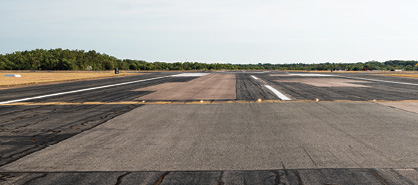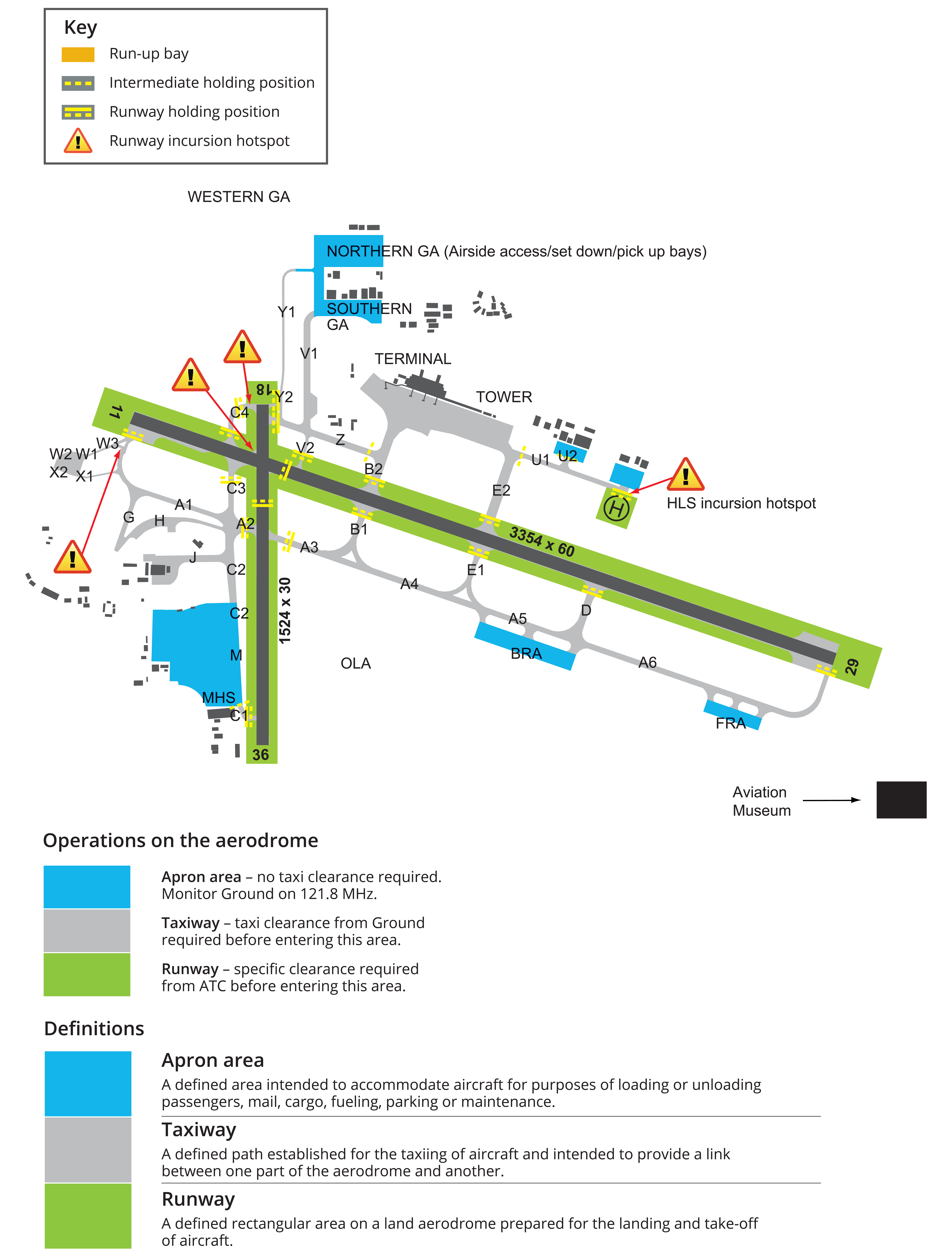After landing, vacate the runway onto the most suitable taxiway without delay. If you are unsure whether to vacate south or north off RWY 29, or onto taxiway Alpha for RWY 36, seek clarification from Darwin Tower 133.10. Once vacated and clear of the runway, contact Darwin Ground 121.80 for onwards taxi clearance.
Remember that you need clearance to cross any runway on your taxi path. Do not stop on your landing runway to request clearance to cross the other runway. Unless instructed otherwise, you are permitted to roll through without clearance.
When landing RWY11, non-local aircraft commonly confuse RWY36 with either TWY C or TWY V and vacate there without the required approval from TWR.
Aircraft may taxi between the western, northern and southern GA aprons without notifying ATC as long as they remain clear of TWY V and Y. If aircraft require use of the run-up bays on TWY V or Y, or are taxiing for departure, they must contact ATC for taxi clearance.
If unfamiliar with the aerodrome, notify ATC on first contact so they can provide taxi guidance. Standard taxi route out of the GA is via TWY V, so aircraft parked in the western GA should taxi past the northern and southern aprons to get onto Victor. Standard inbound route to the GA is via TWY Y.
Land and hold short operations
Some pilots might not have come across the term LAHSO, for land and hold short operations. It is a procedure where dependent operations are conducted on 2 intersecting runways – aircraft land and depart on one runway while aircraft landing on the other runway hold short of the intersection.
On first contact with Darwin, ATC may ask you whether you are LAHSO approved. You may be active, passive or negative LAHSO approved.
Active LAHSO: You hold a current LAHSO endorsement. You can safely carry out a landing with a hold short requirement, while a crossing runway is simultaneously being used by another aircraft. (The LAHSO approval/endorsement involves a pilot, under supervision, completing a series of landings where they hold short of the other runway. Successful completion of this endorsement is stamped into the pilot’s logbook.)
Passive LAHSO (negative active LAHSO): You can safely accept and carry out a landing where you will have the full runway length available on your runway, while another aircraft holds short on the crossing runway. This is the default position of all Australian registered aircraft. You can safely carry out a landing where you will have the full runway length available, while another aircraft holds short on the crossing runway.
Negative LAHSO: You are unable to partake in any LAHSO. ATC cannot sequence you with another aircraft holding short on the crossing runway. Familiarity with this terminology is the key. ATC will ask you to confirm you are negative LAHSO, when in fact you might be passive LAHSO.
Most pilots use passive LAHSO routinely, for example, at a CTAFs where you hold short while another aircraft takes off. So, although a dedicated endorsement is required for you to be active LAHSO approved, this is not the case for passive LAHSO.
To determine if LAHSO are in place, listen to the ATIS which will include, for example: ‘Darwin terminal information Bravo, Runways 29 and 36, land and hold short operations in progress, (wind, temperature, etc.)’.
In this case, ATC can give a pilot a take-off clearance on RWY 29 while another pilot with a LAHSO approval is given a landing clearance on RWY 36, with the proviso they hold short of RWY 29. Because of the crossing runways at Darwin, LAHSO gives ATC considerably more flexibility in being able to use both runways at once, thus greatly improving traffic flow. The benefit to pilots is that it gets them on the ground more quickly, with no delays while waiting for another aircraft’s movement. Flashing LAHSO lights at the hold-short point of both runways will be illuminated.
Passive LAHSO runway – The runway used during LAHSO for arriving and departing aircraft that have the full length available.



